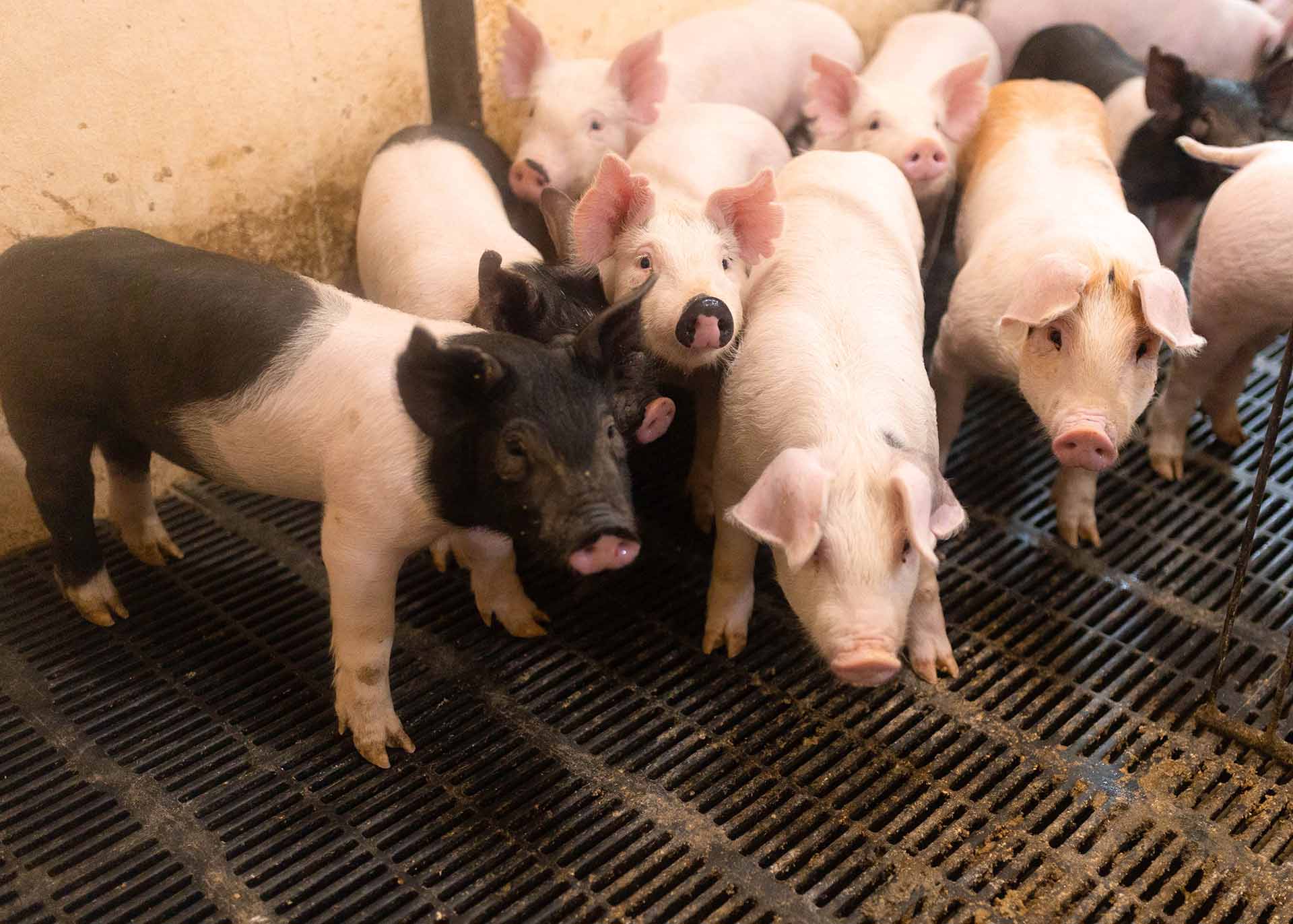
(Photo: Iowa Soybean Association / Joclyn Bushman)
Selling soy through meat
February 1, 2025 | Bethany Baratta
Building demand for soybeans is a global effort. One of the ways Iowa soybean farmers extract value from global endeavors is through its checkoff investment in the U.S. Meat Export Federation (USMEF).
The inclusion of soy in livestock diets, specifically through pigs, means the pork loins sold throughout the world generate value to Iowa soybean growers. A $150,000 investment in USMEF helps sell soy through red meat exports. In 2023, pork exports accounted for 13.32 million bushels of Iowa soybean usage, generating $187.42 million to soybean market value. (Soybeans consumed by pork exports at average soybean price. 13.32 million bushels consumed x $14.07 average soybean price per bushel.)
How does USMEF put the $150,000 Iowa soybean checkoff investment to work?
By leveraging these dollars with other checkoff investments and government Market Access Program dollars, USMEF effectively markets U.S.-grown red meat products in various ways throughout the world.
“The fact that the U.S. soybean industry is vested in what we do allows us to take your dollars and make them go further,” says Dan Halstrom, USMEF president and CEO. “You’re not just investing dollars; you have the benefit of some of those government dollars that go with it. If you’re putting in $150,000, really, it’s a minimum of $300,000.”
The USMEF team frequently hosts teams of retail foodservice customers from various regions for market briefings, seminars, tours of manufacturing facilities and meat processing plants and visits to retail and foodservice outlets, focusing how U.S. pork and beef is utilized successfully in regions.
With a chef on staff, USMEF teams positioned throughout the world showcase the versatility of U.S. pork and beef, showing how various cooking methods and flavors can be enjoyed throughout their respective regions.
“We also tell the story of the inputs, highlighting the quality of the U.S. corn and soybeans that go into meat production,” says Halstrom, who grew up on a farm near Cherokee, Iowa, growing soybeans, corn and cattle.
Market diversification
Like the U.S. soybean industry, USMEF has a diversified portfolio.
“There’s been a more concentrated effort the last 10 years to not be overly reliant on one region,” Halstrom says.
Take Colombia for example. Ten years ago, the region wasn’t even on the map from an export destination perspective.
Today, it’s one of the fastest growing regions of the world for pork and beef exports.
“It’s paid off, big time,” Halstrom says.
USMEF Latin America Representative Homero Recio says recent initiatives to develop new opportunities include a new product launch in Colombia.
“Colombia is a growing market for U.S. pork made up of trimmings, hams, loins and ribs. But how do we grow tonnage? There are different ways to do it,” he says. “One, you just sell more of what you already sell. Another way is to introduce new items and that’s what we’ve been working on with the Boston butt — pork’s best-kept secret.”
The new product with the most immediate potential in Colombia’s foodservice sector may be a pork burger derived from the Boston butt, Recio says.
In terms of new, untapped markets for U.S. red meat, Africa tops USMEF’s list. USMEF Africa Representative Matt Copeland says that by 2050, one in four people in the world will be African. It will take time, says Copeland, but this economic evolution in Africa will be also important to input providers, like the soybean industry.
“Ten years from now, I’m guessing we’ll be talking a lot about Africa in the same context as we’re talking about Central America,” Halstrom says.
Headwinds
As farmers well know, with success, comes headwinds.
USMEF is actively working to break down non-tariff trade barriers, including expanded labeling requirements in Colombia, import permits into Morocco and plant registration challenges in Indonesia.
“These affect market access on a very broad scale,” Halstrom says.
“The more success we have, the more barriers pop up. That’s one area we spend a lot of time on,” he says. “It’s not just pork, beef and lamb, grains have the same challenges. The more we can do to break down barriers, the more opportunities we have.”
Back